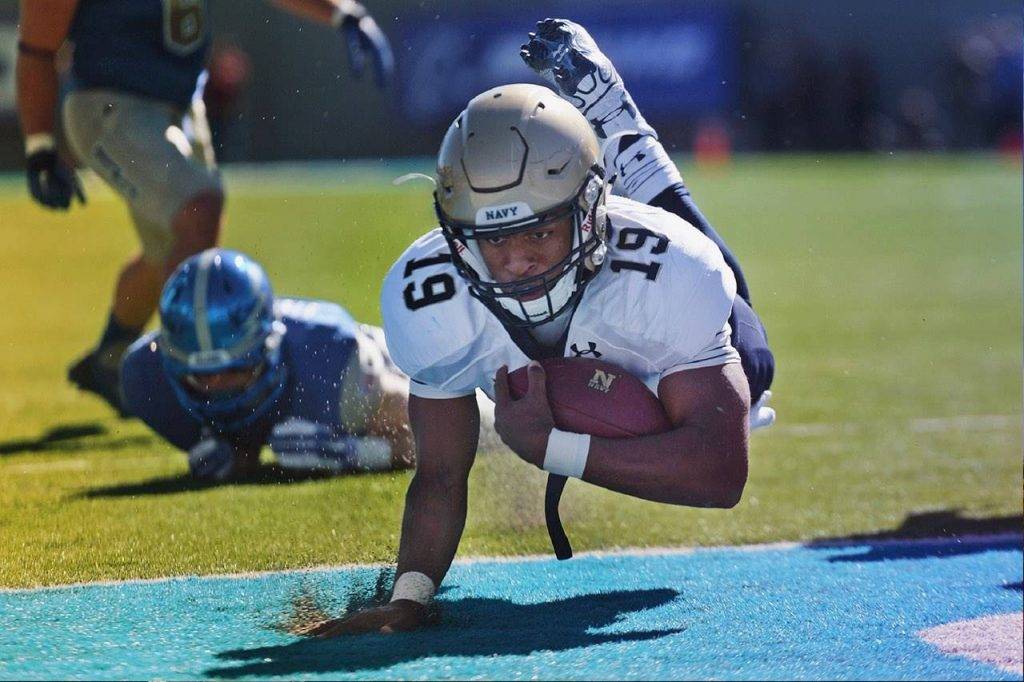Did you know that Larry Fitzgerald, 11 times pro-bowl receiver of the Arizona Cardinals, attributes his success to vision therapy?
Football is a sport in which each player’s position is essential in the successful outcome of the game. Each player has his own responsibility, and is positioned in different areas of the field. Every position is also different in the sense that the players require different skills, both football related, and vision related.
This article will focus on the visual skills required for:
- Quarterbacks
- Wide receivers
- Running backs
1. Which visual skills are necessary to be a successful quarterback?
- Anticipation timing
- Concentration
- Depth perception
- Eye-hand/body/foot coordination
- Peripheral vision
Anticipation timing
Anticipation timing allows you to recognize the most opportune and appropriate time to react to a situation.
This visual skill helps quarterbacks to complete a hand-off to a running back, release the ball at the right moment to the receiver, and move out of the way with enough time to avoid being sacked.
Focus and concentration
Maintaining focus and concentration while playing football is a vital skill for optimal performance. Quarterbacks must be able to maintain focus on the receivers downfield, while tuning out the oncoming rush.
High levels of concentration will help you to stay focused on the ball, your teammates and opponents, and accurately read the defensive scheme to avoid an interception or fumble.
Depth perception
Depth perception is essential for quickly and accurately judging the distance between yourself, your teammates, your opponents, the ball, boundary lines, and the goal. Depth perception is also essential for accurately judging the speed and distance of the receiver in order to put that “pigskin on the numbers”.
Depth perception is crucial in football as the field is 100 yards long and 160 feet wide.
Eye-hand/foot/body coordination
Well developed eye-body coordination allows you to react to incoming visual information with accurate body movements. Strong eye-body coordination enables accurate timing and control over body movements, such as being in the right position to throw the ball while off-balance.
Eye-body coordination is essential in avoiding that flying edge-rusher, and then to help you get in perfect position to power that strike to the back of the end zone.
Peripheral vision
Peripheral vision allows you to see everything around you, without needing to turn your head. This visual skill is necessary for awareness of your surroundings, the other players moving around you, and anything else happening on the field.
Clear peripheral vision enables you to maintain focus, and recognize when the downfield receivers suddenly appear open, for you to meet them with a perfectly spiraled deep ball.
2. Which visual skills are necessary to be a successful receiver?
- Eye tracking
- Concentration
- Depth perception
- Peripheral vision
Eye tracking
Eye tracking skills allow the receiver to clearly see the ball, and judge the flight as it arcs through the air.
This visual skill helps the receiver to maintain clear focus on the ball, to accurately determine where to catch that long ball, to take it to the house.
Concentration
The receiver is in constant motion, running at full speed, stopping on a dime, and then locating the football while the defender is in his face. Full concentration is required for catching a pass, and to keep track of the ball as it passes through a maze of defenders.
Extraordinary concentration skills are essential for effecting that perfect leap and at the precise moment the ball arrives in your hands.
Depth perception
Receivers need depth perception skills to calculate the exact distance and speed the ball is traveling, in order to adjust their own location and speed to make an effective catch.
As a deep spiral can cover over 60 yards, accurate depth perception is necessary to perceive the correct position of the ball within a few inches.
Peripheral vision
Clear peripheral vision is essential for receivers to be aware of nearby opponents, the sideline, and most importantly to make the all important catch. Clear peripheral vision helps the receiver to make a quick move without risking injury.
Peripheral vision enables you to be aware of the nearest defensive back, in order to avoid him, and create space for your quarter back to land the ball in the bucket.
If you suspect you have an eye condition, contact an eye doctor near you, who can diagnose and treat the condition.
SEE RELATED: Vision for Boxing
3. Which visual skills are necessary to be a successful running back?
- Concentration
- Eye-hand coordination
- Speed and span of recognition
- Peripheral vision
Concentration
A running back needs to maintain concentration from the opening kick off to the final play. Many times, a touchdown is needed in the final seconds to ice the game, and this most often relies on the concentration skills of the running back. The running back must be able to keep his head in the game from beginning to end, as he is constantly handling the ball, sometimes filling in as a pass receiver.
Exceptional concentration skills are required to take the pill on the final play and determine exactly what is needed to dive over the corner post.
Eye-hand/foot/body coordination
Well developed eye-body coordination allows the running back to react to incoming visual information with accurate body movements. Strong eye-body coordination skills enable accurate timing and control over body movements, such as being in the right position to avoid that run block and find the open field.
This skill is essential to fly through the open gap in the offensive line, and then get in perfect position to deceive the defensive backs with a flying leap.
Speed and span of recognition
Speed and span of recognition allows you to respond and react to a play as quickly as possible. This visual skill is essential for absorbing all the information in front of you with a quick scan of the field to be aware of the actions and positions of the opposing players.
The faster the speed and wider the span of recognition, the more likely the running back will make the right decision to help him gain that crucial first down.
Peripheral vision
Clear peripheral vision is an essential skill for the running back as he must be able to locate the clearest path ahead, and recognize the movement of players all around him.
Excellent peripheral vision helps the running back to see everything in his environment to avoid incoming tacklers, and burst through a hole that suddenly appears.
What can I do to enhance my football skills?
If you love to play the game, but are struggling to perform to your athletic potential, you may have a problem with your visual skills.
The good news is, with vision therapy, you can retrain the connections between your eyes and brain to strengthen your visual skills, and enhance your football performance.
LEARN MORE: Guide to Sports Vision
Schedule an appointment with an eye doctor for a thorough evaluation of your vision and visual skills. Your doctor will determine which skills require strengthening, and can prescribe a program of vision therapy to help you gain confidence on the field— no matter what position you play.









